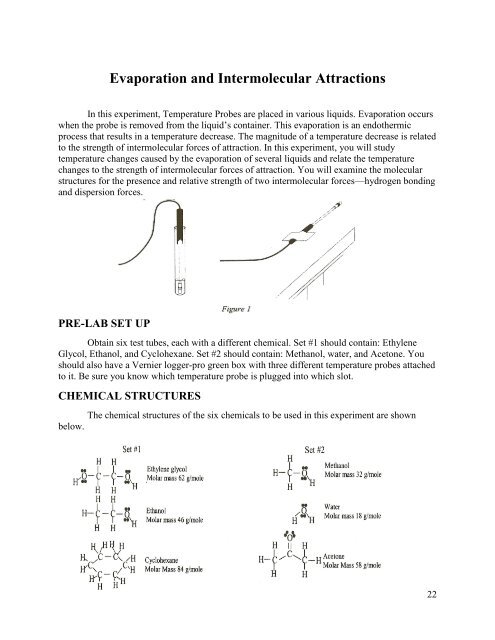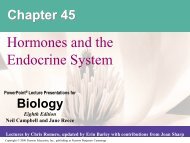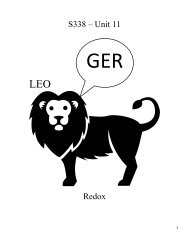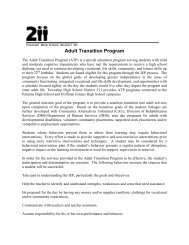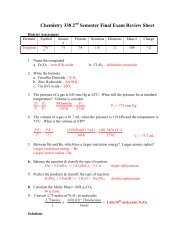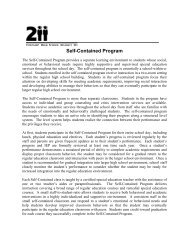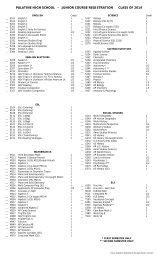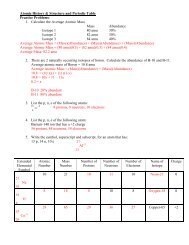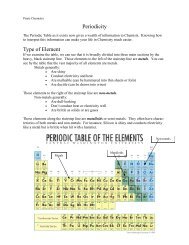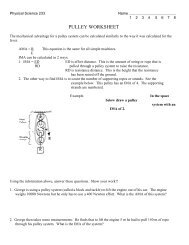for covalent compounds or ions
for covalent compounds or ions
for covalent compounds or ions
Create successful ePaper yourself
Turn your PDF publications into a flip-book with our unique Google optimized e-Paper software.
Evap<strong>or</strong>ation and Intermolecular Attract<strong>ions</strong><br />
In this experiment, Temperature Probes are placed in various liquids. Evap<strong>or</strong>ation occurs<br />
when the probe is removed from the liquid’s container. This evap<strong>or</strong>ation is an endothermic<br />
process that results in a temperature decrease. The magnitude of a temperature decrease is related<br />
to the strength of intermolecular <strong>f<strong>or</strong></strong>ces of attraction. In this experiment, you will study<br />
temperature changes caused by the evap<strong>or</strong>ation of several liquids and relate the temperature<br />
changes to the strength of intermolecular <strong>f<strong>or</strong></strong>ces of attraction. You will examine the molecular<br />
structures <strong>f<strong>or</strong></strong> the presence and relative strength of two intermolecular <strong>f<strong>or</strong></strong>ces—hydrogen bonding<br />
and dispersion <strong>f<strong>or</strong></strong>ces.<br />
PRE-LAB SET UP<br />
Obtain six test tubes, each with a different chemical. Set #1 should contain: Ethylene<br />
Glycol, Ethanol, and Cyclohexane. Set #2 should contain: Methanol, water, and Acetone. You<br />
should also have a Vernier logger-pro green box with three different temperature probes attached<br />
to it. Be sure you know which temperature probe is plugged into which slot.<br />
CHEMICAL STRUCTURES<br />
The chemical structures of the six chemicals to be used in this experiment are shown<br />
below.<br />
22


